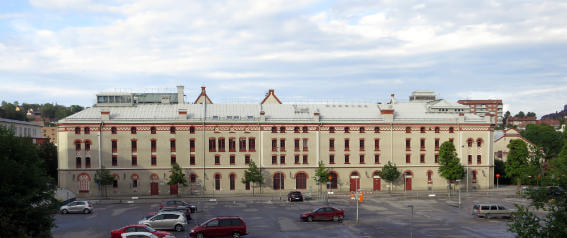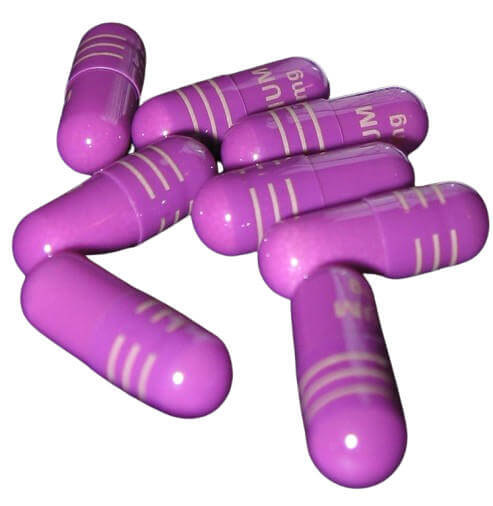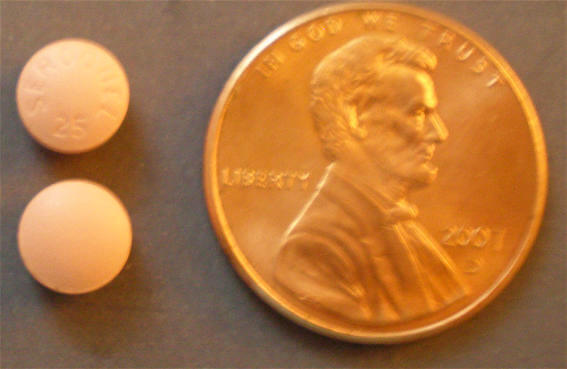There have been many AstraZeneca scandals through the years. In this blog post, you will learn the history of the drug company AstraZeneca. Discover all the company's illegal activities and why you shouldn't trust it.
More...
Legal Notice
The information is presented for educational purposes only and is not intended to diagnose, prescribe treat or cure cancer.This information is not intended as medical advice, please refer to a qualified healthcare professional.
The History Of AstraZeneca
AstraZeneca is a British-Swedish biopharmaceutical company. It sells drugs in more than 130 countries, making it one of the largest drug companies in the world.
The global headquarters is in Cambridge, England. AstraZeneca has more than 80,000 employees in more than 60 countries worldwide.
AstraZeneca started in 1999 as a merger of two drug companies. One was the Swedish drug company Astra AB, and the other was the U.K. Zeneca Group. It was one of the largest mergers between two European companies at the time.

AstraZeneca's global headquarters is in Cambridge, England, picture by FDV
In 1913, Astra AB established itself as a leading pharmaceutical manufacturer in Sweden. Astra AB was the initiative of more than 400 doctors and pharmacists. They joined together to establish the company and to become its first shareholders.
Astra AB's first blockbuster drug was Xylocaine (lidocaine). It was a numbing agent that gained popularity in the United States in the 1950s.
Government wartime restrictions on imports created a demand for Astra's products. The company bought new factory buildings to meet that demand. By the end of World War I, Astra had impressive profits.
However, the company would face obstacles.
Former Company Astra AB Faced Problems
The following years were less successful. The Swedish chemical company Svensk Färgämnesindustri AB acquired Astra AB. The directors assumed that the shortage of raw materials would persist for years.
But prices for raw materials dropped as war shortages disappeared. The company faced imminent bankruptcy. Its manufacturing costs grew larger than the prices of its products. Later, the Swedish government bailed out the company.

Worker in Astra AB, Gothenburg, 1959, picture by Nordiska museet (Nordic Museum)
They wanted to create a nationalized pharmaceutical monopoly. From 1921 until 1925, the government wanted to sell the company. A private consortium bought Astra, and it became an independent company again.
The company got new board members who reorganized many of Astra's operations. They developed the company's distribution network and created research and development facilities. By 1940, company subsidiaries were operating in Finland, Latvia, Stockholm, and Hässleholm.
The company started to develop and expand.
Astra Expanded In The World
During World War II, Astra's profits increased. The company established new subsidiaries in Denmark, Argentina, and the United States.
The most critical Astra product developed during this period was Xylocaine. It was an anesthetic developed in 1943. Xylocaine remained one of Astra's most popular products for years.
Throughout the 1960s, Astra continued to expand both at home and abroad. The company acquired a manufacturer of nutritional products. It also bought a distributor of medical supplies.

Astra AB's former headquarters, picture by Apotekarn
By the 1970s, Astra formed separate divisions for its various activities. Astra focused only on medicines by the end of the decade. The company sold all its other holdings.
By 1984, Astra had three essential products: Seloken, Xylocaine, and Bricanyl. Seloken would become Astra's best-selling drug. It was also one of the best-selling medications in the world.
Beginning in 1997, Astra's shares began to underperform. Rumors of a merger began circulating. The merger would later happen with Zeneca.
How The Zeneca Group Started
The creation of Zeneca Group PLC resulted from an Imperial Chemical Industries (ICI) demerger. ICI was one of the U.K.'s oldest and most renowned chemical businesses. By the end of the 1980s, ICI's drug division was the company's most profitable business.
During its 65-year history, ICI had more than 120,000 employees working in 130 countries. Management decided to continue operating ICI as a chemical company in traditional markets.

A former ICI plant in Huddersfield, West Yorkshire, is now owned by Syngenta, picture by Nigel Homer
When Zeneca started, it took about 30,000 employees from ICI. Zeneca established itself as a 100% owned subsidiary of ICI on January 1, 1993. By June of the same year, Zeneca was separate from ICI.
Zeneca catapulted into the top 20 pharmaceutical companies worldwide. By 1995, Zeneca was operating at full capacity. The company ranked number two in worldwide sales of anti-cancer drugs. It was also one of the top six agrochemical firms worldwide.
Zeneca started to grow in the cancer industry.
Zeneca Grew In The Cancer Industry
Zeneca Pharmaceuticals provided the largest amount of the company's sales. It earned more than £2 billion in 1995. Its research and development focused on treatment for a wide variety of cancers.
One such product was Casodex, an oral prostate cancer drug. Another one was Arimidex for the treatment of breast cancer. Zoladex treated breast cancer in premenopausal women and patients with prostate cancer.
Tomudex was a cell-killing agent for advanced stages of colorectal cancer. Zeneca purchased a 50% share in Salick Health Care, Inc. to expand its presence overseas.
Herbicide products made up about two-thirds of Zeneca Agrochemicals' sales for 1995. Innovative herbicides were Touchdown, Falcon, and Surpass.
In 1997, the company was the second largest seller of cancer drugs. Zeneca rejected merger talks with Astra AB in 1996 because of its ties with Merck. In December 1998, Zeneca announced its merger with Astra. The company had separated itself from its obligations to Merck.
Investors liked the news of the merger. Astra's share price increased 13%, and Zeneca's rose 7.5%. The US$37 billion merger happened on April 6, 1999.
The two companies seemed a perfect match for each other. They were of similar size, valued at over US$30 billion each.
After the merger, the companies would integrate their operations.
The First Steps After The Merger Of Zeneca And Astra
One of AstraZeneca's first steps as a new company was streamlining its operations. It focused on its pharmaceutical business.
AstraZeneca faced patent loss on some of its major drugs. Losec accounted for almost 40% of the company's total sales. Once Losec's patent expired in 2001, other companies could produce it at a lower price.
AstraZeneca released a replacement called Nexium on March 19, 2001. In the early years of the decade, the strategy looked successful.
Nexium was third in the market for new prescriptions in the class in the United States. The company was optimistic about the release of Crestor, a cholesterol-lowering drug.
Today, the company is one of the biggest drug companies in the world.
How AstraZeneca Is Doing Today
AstraZeneca reported strong financial growth in 2024. The total revenue reached $54.1 billion. Oncology remains its largest income. The key drugs were Tagrisso, Enhertu, and Lynparza.

AstraZeneca's R&D Site in Gothenburg, Sweden, picture by Erik031
AstraZeneca's comprehensive product portfolio spans multiple therapeutic areas. They include oncology, cardiovascular, renal & metabolism, respiratory & immunology, and rare diseases.
Top-Selling Drugs
Since 2000, AstraZeneca has paid over $1 billion in fines for various offenses. Most of the penalties were related to healthcare and government-contracting issues.
AstraZeneca Scandals
Before AstraZeneca became a thing, Astra AB had some scandals. One of Astra' infamous drugs was Thalidomide. Babies had severe disabilities, and a third died soon after birth. Astra settled with the victims and their families in 1969.
The company agreed to pay damages, but never admitted any guilt. Multiple patients suffered a form of pneumonia, and some died from taking Iressa, which was AstraZeneca's lung cancer treatment drug.
In Japan, 7000 people who took the drug, about 160 died of pneumonia. The company had to apply a clearer warning label on the danger.
A study found that Crestor, a cholesterol drug, caused kidney failure. The rate of kidney damage was 75 times higher in some patients taking Crestor than in those taking other medications.
The biggest scandal of AstraZeneca happened with the anti-psychotic drug Seroquel.
The Biggest AstraZeneca Scandal
AstraZeneca paid $520 million for the illegal marketing of the anti-psychotic drug Seroquel. The company marketed it for diseases not approved by the FDA. Such unapproved uses are also known as "off-label".
Under the Food, Drug, and Cosmetic Act, a company must specify the intended uses of a product. Before approving a drug, the FDA must determine that the drug is safe and effective for a specific use.
Once approved, you can't market the drug for other uses. Doctors, however, can prescribe a medication for any disease.
The FDA approved Seroquel in September 1997 for the treatment of psychotic disorders. In January 2004, the FDA approved it for short-term treatment of acute manic episodes. Two years later, in October 2006, the FDA permitted Seroquel for bipolar depression.
Between 2001 and 2006, AstraZeneca promoted the drug to psychiatrists and other physicians. The company wanted them to use it for:
- Alzheimer's disease
- Anxiety
- Bipolar maintenance
- Dementia
- Mood disorder
- Sleeplessness
- Anger management
- Attention deficit hyperactivity disorder(ADHD),
- Depression
- Post-traumatic stress disorder
AstraZeneca targeted its illegal marketing of the anti-psychotic Seroquel towards doctors. The company paid doctors to promote the unapproved uses of Seroquel.
AstraZeneca recruited doctors to serve as authors of ghostwritten articles. The company then used those studies and articles to promote Seroquel for other uses.
Other big scandals occurred with the drugs Nexium and Prilosec.
The Heartburn Drugs Nexium And Prilosec Caused Kidney Disease
AstraZeneca paid fines related to Nexium and Prilosec. Nexium and Prilosec treat patients with acid-related symptoms and diseases.
AstraZeneca agreed to pay $425 million to settle about 11 000 lawsuits in the United States. The heartburn drugs Nexium and Prilosec caused chronic kidney disease. The company failed to warn of the risk. AstraZeneca did not admit any wrongdoing.

The heartburn drugs Nexium and Prilosec caused chronic kidney disease, picture by Wikipedia
AstraZeneca pleaded guilty to violating the Prescription Drug Marketing Act ("PDMA") with Zoladex. Zoladex is a treatment for prostate cancer.
Medicare is a federal health insurance program in the United States for people age 65 or older. It does not pay for most drugs needed by patients. However, Medicare covers some drugs, such as Zoladex.
AstraZeneca used Zoladex to scam Medicare and Medicaid.
AstraZeneca Offered And Paid Illegal Payments For Its Drug Zoladex
AstraZeneca provided thousands of free samples of Zoladex to physicians. The company knew doctors would prescribe the free drug samples to their patients. AstraZeneca then billed those free samples to the patients through Medicare and Medicaid.
AstraZeneca offered and paid illegal payments in various forms. It gave grants and services, and paid for travel, entertainment, and consultation.
AstraZeneca marketed a "Return-to-Practice" program to physicians. This Return-to-Practice program inflated the Average Wholesale Price ("AWP").
AstraZeneca set the price for Zoladex at levels higher than customers paid for the drug. As a result, AstraZeneca's customers received higher rebates than what physicians paid. AstraZeneca misreported and underpaid its Medicaid rebates for Zoladex.
This criminal act caused losses of $39,920,098 to Medicare and other insurance programs. AstraZeneca agreed to pay a $63,872,156 criminal fine.
AstraZeneca would also face problems with its COVID-19 vaccine.
The COVID-19 Vaccine Caused Serious Side Effects
Another scandal involved AstraZeneca's COVID-19 vaccines. A man in India had severe neurological problems with the AstraZeneca vaccine. The 40-year-old man in the AstraZeneca trial developed acute neuroencephalopathy.
Before that incident, a trial volunteer developed symptoms of transverse myelitis. It's a rare, debilitating neurological disorder linked to vaccines.
In September, a trial paused after another participant in the U.K. got the same symptoms. In October, a participant in Brazil died.
What was even more disturbing was that the FDA knew about the side effects of COVID-19 vaccines. However, they decided to do nothing. AstraZeneca has a long history of scandals. Some include bribery and the deaths of a dozen babies.
Shenzhen Kangtai Biological Products is one of China's biggest vaccine makers. It got a deal with AstraZeneca to create the COVID-19 shot. Kangtai made headlines in 2013 when 17 infants died after taking its vaccine for hepatitis B.
AstraZeneca admitted in court documents that its COVID-19 vaccine caused rare side effects. The drug company caused death and serious injury in dozens of cases. Lawyers said the vaccine produced devastating side effects in some families.
The vaccine also created blood clots in people.
Patients Started To Get Blood Clots After Taking The Vaccine
Thrombosis with Thrombocytopenia Syndrome causes people to have blood clots. It also causes a low blood platelet count. Almost one in five people who suffered from the condition died as a result, according to the MHRA's figures.
Fifty-one victims and grieving relatives sought damages worth up to £100 million. Lawyers argued that the AstraZeneca-Oxford vaccine was defective. The government protected AstraZeneca against any legal action.
Tamoxifen is a hormone therapy used to treat hormone receptor-positive breast cancer. It blocks estrogen activity in the breasts.
Tamoxifen side effects may include:
- Menopause-like symptoms
- Irregular or loss of menstrual periods
- Nausea
- Skin rash
- Headaches
- Weight gain
- Leg swelling
- Vaginal discharge
- Erectile dysfunction
- Fatigue
The World Health Organization declared Tamoxifen a carcinogen(causing cancer).

Tamoxifen(brand names Nolvadex and Soltamox) is a hormone therapy used to treat hormone receptor-positive breast cancer
Researchers collected data on 8981 women with primary breast cancer aged at least 50. They received hormonal therapy but not chemotherapy.
The researchers found breast cancers in the opposite breast in 89 of the tamoxifen users. Among the non-users, 100 had extra cancer.
Of these 189 women, 112 had oestrogen receptor-positive tumours. Twenty had oestrogen receptor-negative tumours, and 57 had undetermined tumour types.
Of the 20 women with the more dangerous oestrogen receptor, 17 had taken Tamoxifen. The results suggested that Tamoxifen stimulated the growth of oestrogen receptor-negative cells.
Summary
AstraZeneca is a British-Swedish biopharmaceutical company.
It started in 1999 as a merger of two drug companies. One was the Swedish drug company Astra AB, and the other was the U.K. Zeneca Group.
In 1913, Astra AB established itself as a leading pharmaceutical manufacturer in Sweden.
Throughout the 1960s, Astra continued to expand both at home and abroad.
The creation of Zeneca Group PLC resulted from an Imperial Chemical Industries (ICI) demerger.
When Zeneca started, it took about 30,000 employees from ICI.
In 1997, the company was the second largest seller of cancer drugs.
AstraZeneca's comprehensive product portfolio spans multiple therapeutic areas.
Since 2000, AstraZeneca has paid over $1 billion in fines for various offenses.
AstraZeneca paid $520 million for the illegal marketing of the anti-psychotic drug Seroquel.
AstraZeneca agreed to pay $425 million to settle about 11 000 lawsuits in the United States for the drug Nexium.
AstraZeneca admitted in court documents that its COVID-19 vaccine caused rare side effects.
The World Health Organization declared Tamoxifen a carcinogen(causing cancer).
How To Avoid Further AstraZeneca Scandals
1. Watch the Cancer Crash Course
Action Steps
The best way to avoid the influence of drug companies is by learning how to stay healthy. Drug companies can only destroy your life if you believe that you have no control over your health.
But you have more control over your health than you believe. If you follow certain health principles, you can reduce the risk of cancer.










